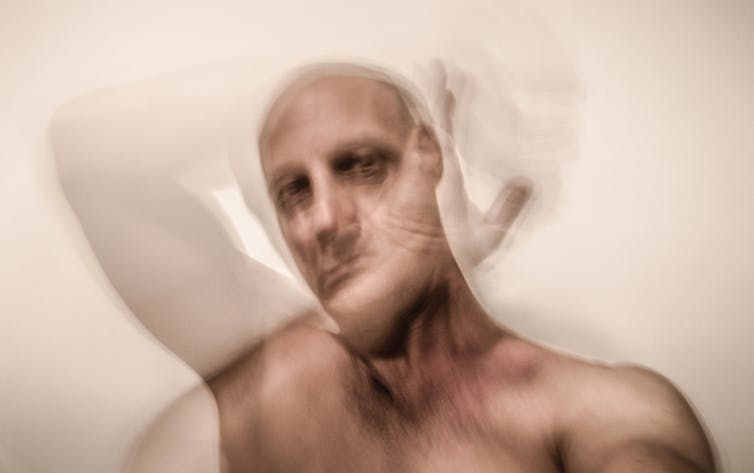
Do you ever hear a sound when there is nothing around to explain it? Or perhaps you have the feeling that someone is nearby when they’re not? Some people have a lot of these experiences. Others, hardly any. Certain mental health conditions, such as schizophrenia, can cause them, but unusual perceptions also happen in people who don’t have mental health problems. A new finding from my research group suggests that autistic adults are particularly likely to have these kinds of experiences.
In our study, autistic and non-autistic adults were presented with a list of unusual perceptions and asked to indicate how many they had experienced. Autistic people reported three times more of these unusual experiences than non-autistic people. For example, we found that 63% of autistic adults answered yes to the question: “Do you ever feel that someone is touching you, but when you look nobody is there?” compared with only 7% of non-autistic adults. Similarly, 47% of autistic adults answered yes to the question: “Do you ever see shapes, lights, or colours even though there is nothing really there?” compared with 14% of non-autistic adults.
Until now, scientists didn’t know that hallucinatory type experiences occur in autism, although we’ve known for a long time that autism is associated with more sensitive hearing and sight.
However, unusual hallucinatory perception is different to being sensitive to particular stimuli. Some of the items in the questionnaire asked about changes in stimulus intensity which we might expect to be increased in autism, but other questions focused on strange or distorted perceptions, such as “Do you ever experience unusual burning sensations or other strange feelings in or on your body?” and “Do you ever hear your own thoughts spoken aloud in your head, so that someone near might be able to hear them?” Three times more autistic adults than non-autistic adults responded yes to both of these questions, indicating that our finding doesn’t just reflect more sensitive perception.
Different levels of certain chemicals in the brain (neurotransmitters) may explain why some people have more unusual perceptions than others. Migraines, for example, are often preceded by hallucinations, such as seeing lights and shapes that aren’t there. Similarly, epilepsy can be associated with strange perceptions.
Both migraine and epilepsy have been linked to changes in levels of the neurotransmitter GABA. Within the brain, some neurotransmitters have an excitatory role and stimulate neural activity, while others have an inhibitory role and serve to reduce neural activity. GABA is an inhibitory neurotransmitter. Reductions in GABA levels can therefore lead to overactivity in the brain causing both visual disturbance and seizures. Altered GABA levels have also been implicated in autism.

Cyrsiam/Shutterstock
Not the only culprit
The link between unusual perception and autism may not come just from innate differences in chemicals in the brain, however. Recent work suggests that negative experiences, such as being bullied or socially isolated, may lead to hallucinations.
Unfortunately, many autistic people suffer social isolation and bullying, and these negative events may contribute to the development of unusual perceptions. A recent article in The Conversation described how people who face discrimination, such as immigrants, also have more hallucinatory and paranoid feelings than people who are not discriminated against. Similar mechanisms may be at work in autism.
As well as finding that unusual perceptual experiences are much more common in autism, we found that the experiences are much more distressing in autism. And it’s important to consider what can be done to limit this distress. One of the first places to start is with understanding and acceptance.
If someone with autism has these experiences then knowing that they are quite common in other people with autism can help to reduce their worry about it. Doctors may not always think to ask people with autism about unusual perceptions, but our research suggests that this could be an important area to discuss in the clinic so that methods can be introduced to help people cope with it when it happens.
Perhaps most crucial is the importance of developing a better understanding of autism in the general public. More and more people are being diagnosed with autism, including a growing number of people who don’t receive a diagnosis until adulthood. Often only small changes are needed to help people with autism integrate more fully into society. These small steps can go a long way to reducing social isolation.
If social isolation and bullying do contribute to the development of unusual perception in autism, then reducing the distress caused by these unusual perceptions is one of many benefits that would be brought about by the creation of a society where autism is more clearly recognised and understood.
![]()
Elizabeth Milne receives funding from the British Academy as part of a Mid-Career Fellowship investigating autism spectrum conditions in adulthood.
